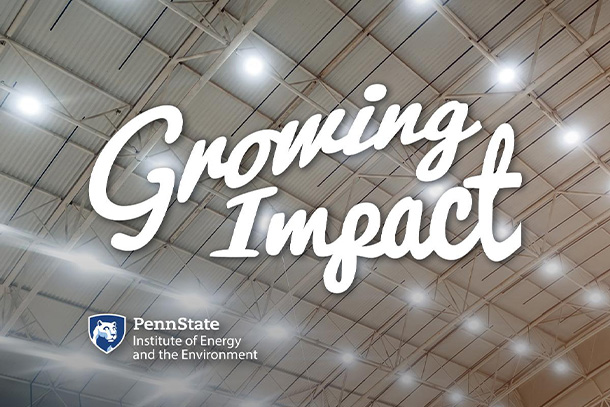
The latest episode of Growing Impact discusses lighting system design and evaluation and if the current approach to quantifying light source efficiency is accurate. Credit: Brenna Buck. All Rights Reserved.
'Growing Impact' examines light source efficiency, accuracy
July 2, 2024
Editor’s note: A version of this article was first published on Penn State News.
UNIVERSITY PARK, Pa. — The latest episode of the "Growing Impact" podcast discusses lighting system design and evaluation. In the early 20th century, scientists developed a standard, repeatable approach to measure light.
The graph, called the spectral sensitivity curve or “the standard observer,” quantifies light output and standardized lamp brightness calculations. Although experts recognized its imperfection and proposed alternatives, this graph remains the standard a century later. Alp Durmus, an assistant professor in the Department of Architectural Engineering, is leading a project that is investigating if the current approach to quantifying light source efficiency is accurate.
“There are some alternatives in the way that we quantify light, and we want to test these in a systematic way to see if what we do right now is a good method,” Durmus said. “Accurate quantification of light sources is important because consumers like to know the quality of a lighting product. Additionally, an efficient light source can reduce their energy bills.”
Durmus said this research project with computational simulation of what it would look like if the alternatives to the standard observer would make a difference in the way energy efficiency is quantified.
“Our results suggest that there would be statistically significant differences between the standard approach and the alternative approaches,” he said.
Durmus said a key component of this project is to use human participants to determine if the current standard is accurate or if a new alternative standard is superior. In some lighting conditions, the standard method and alternative methods do not agree on light measurements.
“In our experiment, we will bring in participants, and ask them to compare the brightness of two lights that should be identical per the standard observer, but appear different per the alternative methods,” Durmus said. “If they cannot see the difference, that means the standard is correct. But if they indicate that the light that the alternative said is brighter is indeed brighter, that means the alternative is better than the standard method currently used.”
Durmus said that developing a more accurate quantification of light source efficiency will help the industry, end users and other researchers.
“For example, manufacturers are developing highly optimized light sources using LEDs that have several different colors in them,” he said. “If they are aiming to quantify energy efficiency using the wrong metrics, their highly optimized solutions will not be helpful for us.”
Durmus said it is an intriguing challenge to design experimental lighting conditions in which a standard observer and an alternative model produce different estimates for the same lighting condition.
“Creating these conditions in the lighting lab takes a lot of time, and it requires high-precision lighting systems that can be spectrally tuned,” he said. “It involves a lot of optimization, generating algorithms, testing, measuring, more testing and evaluating the results. It's a lengthy process.”
"Growing Impact" is a podcast by the Institute of Energy and the Environment (IEE). It features Penn State researchers who have been awarded IEE seed grants and discusses their foundational work as they further their projects. The podcast is available on multiple platforms, including YouTube, Apple, Amazon and Spotify.

